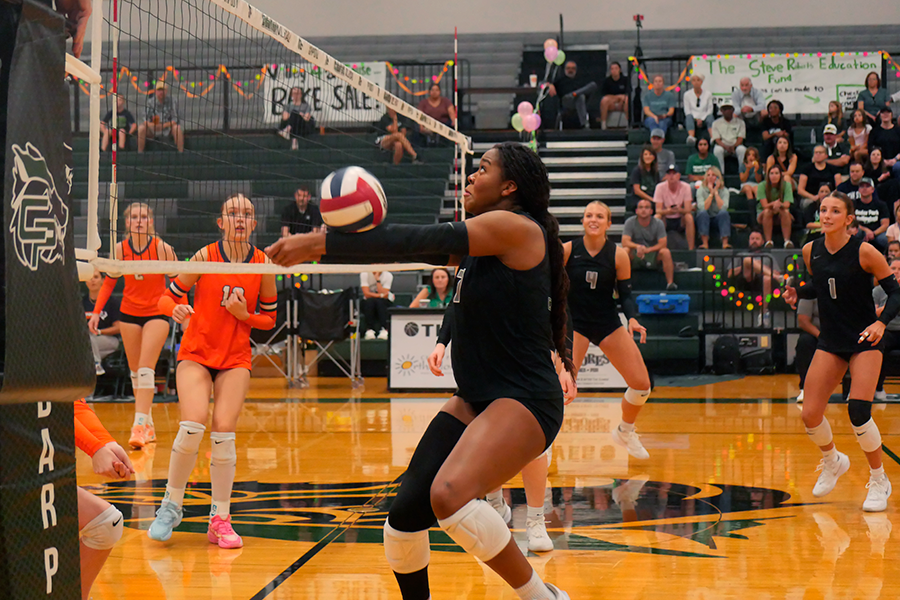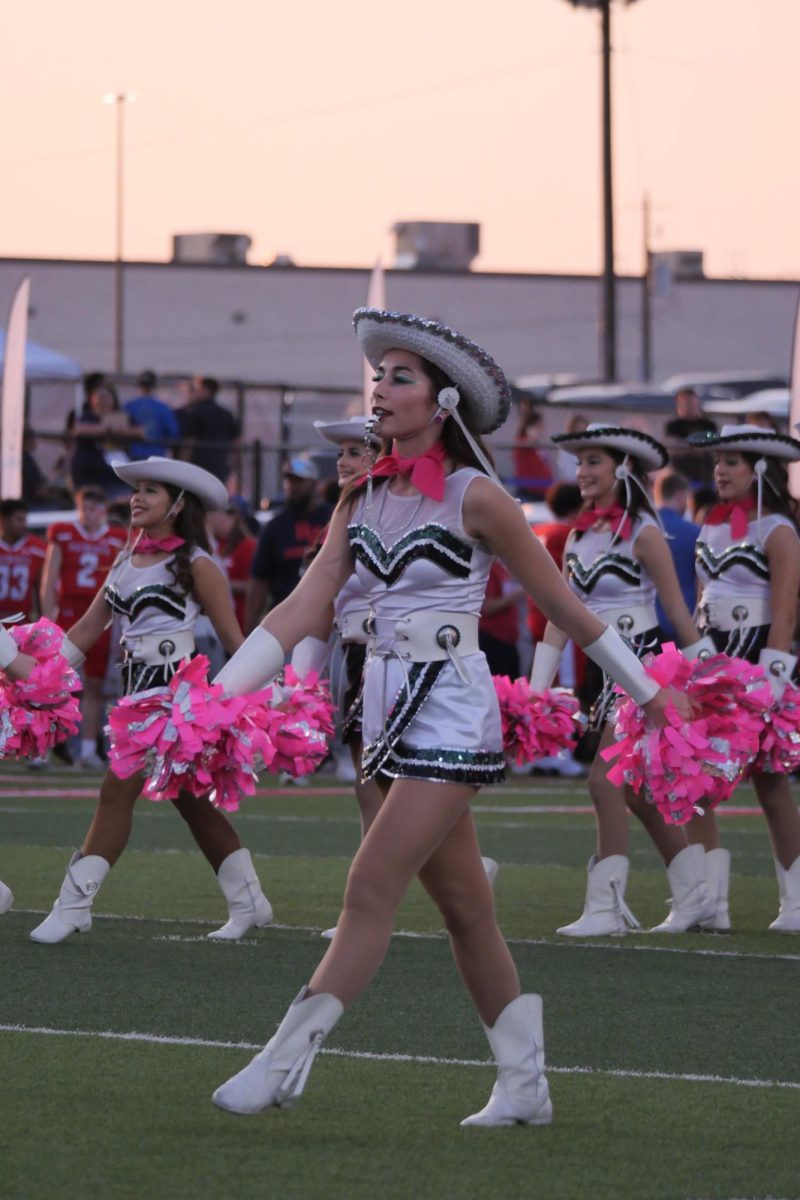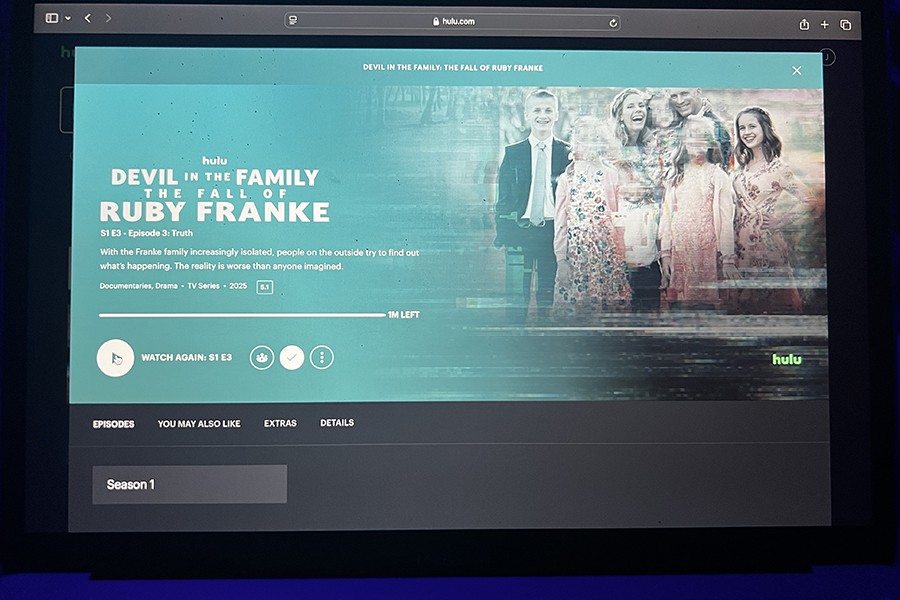With social media web sites such as Twitter and Facebook rising in popularity, some teachers are utilizing websites to help them inform students about events such as quizzes, upcoming projects, and tests. In response to this growing trend of social websites in the classroom, Leander is drafting rules about how teachers may use such websites and communicate with students.
The drafted rules dictate how teachers are to act online and what can and cannot be on their profile. This means that teachers must now have a separate Facebook account for their students to use apart from their personal account for friends and family. The rules state that teachers planning to use Facebook must use a professional Facebook page with completely open access for parent and students. No conversations may happen on this page via such tools as Facebook chat and, unless they fall under certain specifications, no familial relations may exist on this professional account. It would simply be a place where teachers post information about the classroom for all to see.
Texting has also been limited so that only teachers running an after school club or extracurricular activity may use texting. Teachers such as Melody McCormick, Latin teacher, have been using Facebook and many other means of communication to help her students better understand the material being taught and figure out where they are struggling.
“I don’t think that allowing students to get to know us as people is a bad idea,” McCormick said.
Some teachers choose to utilize media other than Facebook. Troy Inman, pre-calculus teacher, uses Twitter to update his students on upcoming information for his class.
“As long as there is no personal information and it’s done in a professional way, then it’s okay,” Inman said.
With so much information available today, teachers must use discretion when linking to things on the web. Another portion of the rules are dedicated to how teachers are responsible to what they link and send to their students.
“I use [links] as sources of information for my class. There’s even an Iliad spoof on Facebook that I link for my students,” McCormick said.
Some teachers feel that these rules are a good thing to rules in place dictating their behavior on what they post online. If such rules are broken then a variation of disciplinary actions may be taken on the teacher.
“I think they are good rules if teachers are using websites to help kids learn,” Inman said.
Other teachers, however, have qualms about these rules. With special regards towards the boundaries of communication online and the ban from texting leave some teachers feeling as though they are being limited in how they can help their students with their studies.
“I can understand the need for such rules, but I have used these websites for years,” McCormick said. “I don’t want to stifle communication with my students. I try to help create open communication with my students.”
Teachers using these websites use them alongside the personal websites designated for them by the district. These websites have all the information that a student needs, including links to the classroom calendar, websites that could help students, and classroom assignments. Some students feel as though the uses of this along with social networking websites are redundant and unnecessary.
“I don’t like it because if people wanted information on their class then they should just go to their teacher’s websites for the information,” Hailey Rafferty, senior, said.
With access to teacher’s websites through the school some students are questioning why teachers would want to use these websites. On the other hand some students think that using websites such as Twitter would be a useful way of passing along information.
“I think they should [be able to use these sites],” Sarah Worth, senior, said. “It would be very helpful, as long as we can get the information conveniently.”
There are many thoughts about how teachers should be able to contact students and when it’s appropriate to do so, but only time will tell whether or not these rules are going to be the new standard.



![Jumping off the ground, senior linebacker Bennett Patton snatches the ball out of the air for an interception at Thursday’s game against Chaparral. Patton had two interceptions in the 56-14 victory, tying the school record for interceptions in a game. “I was just playing the game,” Patton said. “[I’m] going to go into next week, forget about it and stay humble.” Photo by Harper Chapman](https://cphswolfpack.com/wp-content/uploads/2025/09/bennett-interception.jpg)
![The fire department came to the school after students were evacuated when smoke started coming from the ceiling of a classroom. All students and staff are safe. “All of my friends left their stuff too, so we couldn’t contact our parents, and it was stressful,” senior Brynn Fowler said. “It was scary because I didn’t know [what was going on], and I couldn’t find anyone because it was a big crowd.” Photo by Anthony Garcia](https://cphswolfpack.com/wp-content/uploads/2025/09/firetruck.jpg)


![Sitting with her friend senior Sohpia Struve at last year’s Austin City Limits Festival, senior Ava Zuniga poses for a picture under a pavilion. They are frequent attendees at ACL, an annual music festival at Zilker Park. “I would recommend seeing a bunch of people,” Zuniga said. “This past year, we camped out for Chappell [Roan] for a really long time. I think the whole point of ACL, [which] is a lot of fun, is that you can go see so many different people, even if you don’t know them. So by camping by one person, it really limits yourself from being able to go see a bunch of people.” Photo courtesy of Ava Zuniga](https://cphswolfpack.com/wp-content/uploads/2025/10/EE9E9484-FE6F-4AA0-B5F5-0C177AB32841-1200x857.jpeg)
![Broadcast, yearbook and newspaper combined for 66 Interscholastic League Press Conference awards this year. Yearbook won 43, newspaper won 14 and broadcast took home nine. “I think [the ILPC awards] are a great way to give the kids some acknowledgement for all of their hard work,” newspaper and yearbook adviser Paige Hert said. “They typically spend the year covering everyone else’s big moments, so it’s really cool for them to be celebrated so many times and in so many different ways.”](https://cphswolfpack.com/wp-content/uploads/2025/05/edited-ILPC.jpg)




![Looking down at his racket, junior Hasun Nguyen hits the green tennis ball. Hasun has played tennis since he was 9 years old, and he is on the varsity team. "I feel like it’s not really appreciated in America as much, but [tennis] is a really competitive and mentally challenging sport,” Nguyen said. “I’m really level-headed and can keep my cool during a match, and that helps me play a bit better under pressure.” Photo by Kyra Cox](https://cphswolfpack.com/wp-content/uploads/2025/09/hasun.jpg)


![Bringing her arm over her head and taking a quick breath, junior Lauren Lucas swims the final laps of the 500 freestyle at the regionals swimming competition on date. Lucas broke the school’s 18-year-old record for the 500 freestyle at regionals and again at state with a time of 4:58.63. “I’d had my eye on that 500 record since my freshman year, so I was really excited to see if I could get it at regionals or districts,” Lucas said. “ State is always a really fun experience and medaling for the first time was really great. It was a very very tight race, [so] I was a bit surprised [that I medaled]. [There were] a lot of fast girls at the meet in general, [and] it was like a dogfight back and forth, back and forth.” Photo by Kaydence Wilkinson](https://cphswolfpack.com/wp-content/uploads/2025/03/Kaydence-2.7-23-edit-2.jpg)
![As the support team sits and poses for a photo in the cafeteria with the counseling team they eagerly wait to start their day. "We [all] seem to be a team, I get up every day and there's days where I don't want to go to work today, but I'm thankful that I have a job and I'm blessed to have what I have," Christopherson said. Photo Courtesy of Julie Weltens.](https://cphswolfpack.com/wp-content/uploads/2025/01/AF9E8470-10D7-4C91-BF28-EC8F86BAB66C-1200x852.jpeg)
![Officer Stephanie Cash is in her second year as an SRO at CPHS. “Seeing [students] grow over the years has been kind of cool,” Officer Cash said. “Freshmen that [are] all over the place and then in the next couple of years get a little more squared away and go to class and do work and start thinking about the future. Being a part of a student's growth is the best way to measure my success as an SRO.” Photo Courtesy of Cedar Park Police Department's PIO, Alicia Gallagher.](https://cphswolfpack.com/wp-content/uploads/2024/12/CPHS-SRO-900x1200.jpg)
![As he sprints with the ball, senior running back Trae Hill breaks a tackle during Friday’s 35-14 loss against the Vandegrift Vipers. Hill ran for 135 yards and two touchdowns during the game. “[Scoring] was electric,” Hill said. “It always feels good to score, but the O-line did everything.”](https://cphswolfpack.com/wp-content/uploads/2025/09/IMG_0795allie.varfb_-1200x799.jpg)














